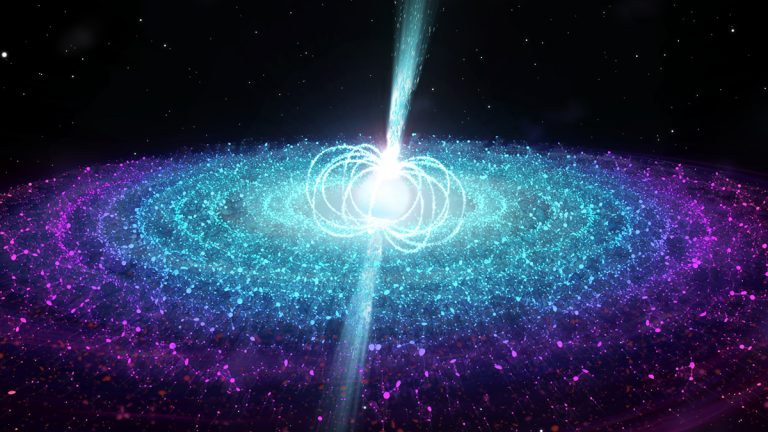Astronomers using the National Science Foundation’s Karl G. Jansky Very Large Array (VLA) have discovered a fast-moving jet of material propelled outward from a type of neutron star previously thought incapable of launching such a jet. The discovery, the scientists said, requires them to fundamentally revise their ideas about how such jets originate.
Neutron stars are superdense objects, the remnants of massive stars that exploded as supernovas. When in binary pairs with “normal” stars, their powerful gravity can pull material away from their companions. That material forms a disk, called an accretion disk, rotating around the neutron star. Jets of material are propelled at nearly the speed of light, perpendicular to the disk.
“We’ve seen jets coming from all types of neutron stars that are pulling material from their companions, with a single exception. Never before have we seen a jet coming from a neutron star with a very strong magnetic field,” said Jakob van den Eijnden of the University of Amsterdam. “That led to a theory that strong magnetic fields prevent jets from forming,” he added.
The new discovery contradicts that theory.
The scientists studied an object called Swift J0243.6+6124 (Sw J0243), discovered on October 3, 2017, by NASA’s orbiting Neil Gehrels Swift Observatory, when the object emitted a burst of X-rays. The object is a slowly-spinning neutron star pulling material from a companion star that is likely significantly more massive than the Sun. The VLA observations began a week after the Swift discovery and continued until January 2018.

Fig. Artist's conception shows magnetic field lines around neutron star, accretion disk of material orbiting the neutron star, and jets of material propelled outward.
See: https://public.nrao.edu/news/jet-from-wrong-kind-of-star/
